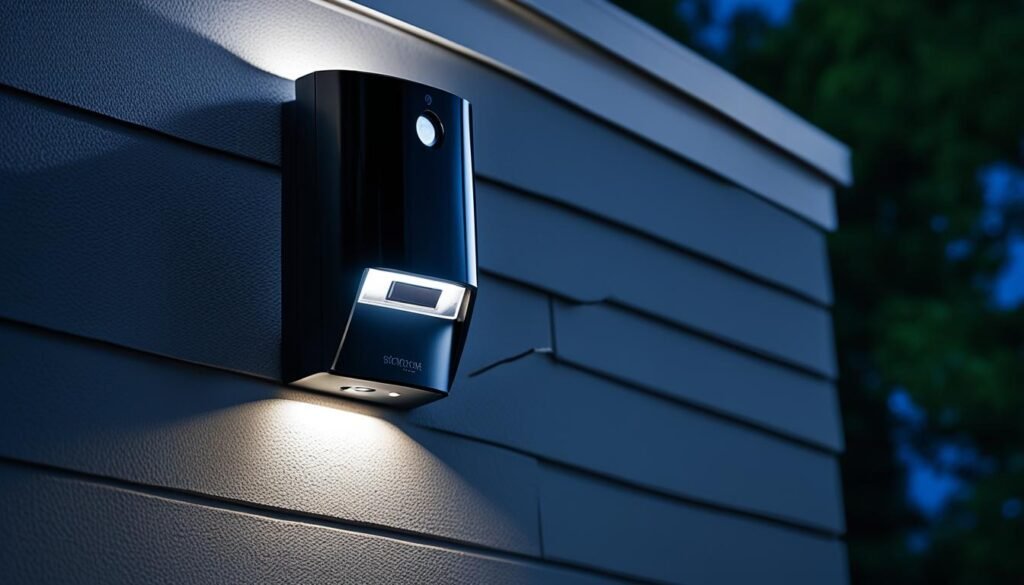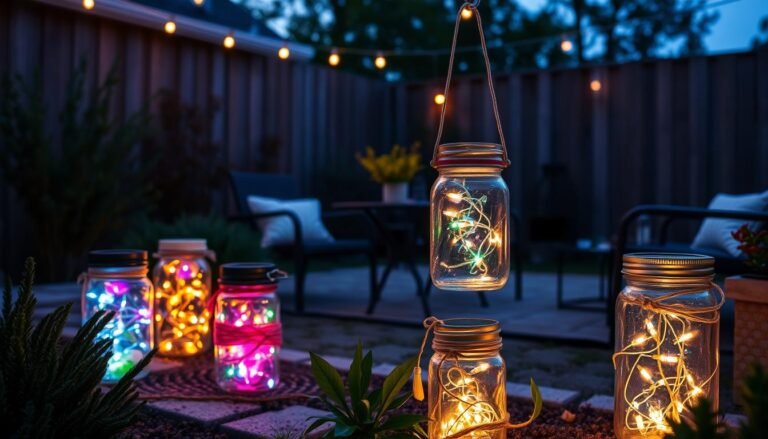Affiliate Disclosure: This post may contain affiliate links. If you make a purchase, we may earn a small commission at no extra cost to you.
Imagine your outdoor lights turning on at dusk and off at dawn without you lifting a finger. This magic is thanks to photocell sensors. They change how we handle lighting at home. These smart sensors, or light-dependent resistors, notice changes in light and adjust your lights automatically.
Photocell sensors are key to smart lighting control. They make your lights turn on and off based on the light around you. By using them, you can save a lot of energy. They dim or turn off lights when there’s enough natural light, cutting down your power use. Plus, they make life easier by controlling lights for you, so you don’t have to.
Key Takeaways
- Photocells enable smart lighting control based on ambient light levels.
- Using photocell sensors can lead to energy savings by optimizing lighting usage.
- Photocell sensors automate lighting control, providing convenience and eliminating the need for manual adjustments.
- Photocell sensors ensure well-lit environments, improving safety and reducing the risk of accidents or criminal activities.
- These sensors offer customizable sensitivity settings for flexible lighting automation.
Check out our FREE Calculators on our Resources Page
Understanding Photocell Sensors
A photocell sensor, also known as a light sensor, is a device that turns light into electrical signals. It changes its electrical resistance based on the light it gets. When it’s light, it lets more current flow. In the dark, it reduces current flow. This makes photocell sensors perfect for controlling outdoor lights, turning them on when it gets dark.
What is a Photocell Sensor?
A photocell is a device that reacts to light. It uses the photoelectric effect to create an electrical current or voltage. These sensors are used in many things, like street lights, security systems, and even lamps and night lights at home.
Types of Photocell Sensors
There are different kinds of photocell sensors, each with its own uses:
- Cadmium Sulfide (CdS) Cells: These are the most common type, sensitive to many light wavelengths. They work best with light in the visible spectrum, especially around green.
- Photoconductive Cells: These sensors change their resistance when hit by light. They’re used where precise light control is needed.
- Photodiodes: These are fast and generate current when lit up. They’re used in things like fiber optic communications.
All photocell sensors can detect changes in light levels, making them key for controlling lights and automating things.
Benefits of Using Photocell Sensors for Outdoor Lighting
Photocell sensors make managing outdoor lighting easy. They turn lights on at dusk and off at dawn automatically. This saves energy, cuts down on electricity costs, and helps the environment. They also make lighting your outdoor spaces convenient and automated, so you don’t have to do it yourself.
Energy Efficiency
Photocell sensors boost the energy efficiency of outdoor lighting. They adjust the lighting based on the light around them. When it’s dark, they turn the lights on; when it’s light enough, they turn them off. This saves energy and lowers your bills, making them a smart choice for homes and businesses.
Convenience and Automation
Photocell sensors automate your outdoor lighting control. They turn the lights on when it’s dark and off when it’s light. This means you don’t have to switch the lights yourself, keeping your spaces well-lit without hassle.
They can also work with motion sensors for more convenience and safety. When someone moves around, the lights come on, making your space safer and welcoming for visitors.

Photocell sensors are affordable and perfect for DIY projects or big installations. They’re used in street lights, automatic doors, and more, showing how versatile and popular they are.
Photocell Sensor: Upgrading Your Street Lamps with Smart Port Photocells
Smart port photocells can change how your outdoor lights work. They let you add controls to high-intensity discharge (HID) LED street lamps easily. This means you can save a lot of energy and customize your lights. These sensors connect in seconds through a standard 3.5mm AUX port, making it simple to set the daylight threshold and timing.
If you don’t plug in a sensor, your lamp will still work like usual. But with smart port photocells, HID LED street lamps use less energy. LED floodlights with photocells also save energy by only lighting up when needed, helping save more energy.
Photocell flood lights turn on at sunset and off at dawn. This makes your home look occupied, scaring off intruders. They also make it safer by giving better light, making it easier to see. These lights last longer than old ones, making them a good choice.
Adding photocell flood lights can make your home safer and more secure. When picking these lights, think about the power source, how bright they are, and the type of bulb for the best lighting.
Smart port photocells are a great choice for making your outdoor lighting better. They give you control over your lights, cutting down on energy use and boosting safety and security in your area. By using smart port photocells, you’re stepping into the future of street lighting and seeing big changes.
Integrating Photocell Sensors with Smart Home Systems
Photocell sensors can be easily added to your smart home systems. This brings a new level of control and customization to your outdoor lighting. If you’re having trouble with your current photocell sensor, you can swap it out for a smart switch. This switch can be controlled by your smartphone app or voice commands.
Automating your outdoor lighting with schedules and sensors helps save energy and ensures your home is always lit up. This is true even if there’s a power outage or if a sensor fails. Smart home systems with photocell sensors adjust the lighting based on the natural light. This leads to big energy savings.
Replacing Photocell Sensors with Smart Switches
Smart switches are a great alternative to traditional photocell sensors. They offer more control and customization through your smart home system. These devices are easy to install and program. They can turn your outdoor lights on and off based on what you prefer, so you don’t have to do it manually.
Automating Outdoor Lighting with Schedules and Sensors
By linking photocell sensors with your smart home system, you can set automated schedules for your outdoor lighting. This makes sure your home is well-lit in the evening and saves energy when it’s daylight. Photocell sensors also help your lighting fixtures last longer by preventing them from being turned on when they don’t need to be.

As technology gets better, we’ll likely see more improvements in how photocell sensors work with smart home systems. We might see wireless connectivity and smart algorithms for even more energy savings and convenience. The future could bring innovations like daylight harvesting. This means sensors and smart algorithms work together to use energy wisely based on the amount of natural light.
Conclusion
Photocell sensors are changing the game for outdoor lighting at home. They bring energy efficiency, convenience, and automation together. By learning how they work and their benefits, you can make your lighting smarter and more efficient.
Looking to upgrade your outdoor lights? Photocell sensors offer endless possibilities. They let you cut down on energy costs and help the planet too.
Smart lighting and automation are on the rise. Photocell sensors are leading the way. They promise a future of efficient, easy, and automated outdoor lighting for homes and businesses.
FAQ
What is a photocell sensor?
What are the different types of photocell sensors?
How do photocell sensors improve energy efficiency?
What are the benefits of using photocell sensors for outdoor lighting?
How can I upgrade my street lamps with smart port photocells?
How can I integrate photocell sensors with my smart home system?
Check out our FREE Calculators on our Resources Page
Source Links
- Photocells – https://learn.adafruit.com/photocells/overview
- Photocell Sensors | What They Are, How They Work & Why We Use Them – https://kbelectricpa.com/photocell-sensors-what-are-they/
- Benefits of Photocell Outdoor Lighting Sensors – https://topnotchlandscapelighting.com/blogs/news/benefits-of-photocell-outdoor-lighting-sensors
- Photocells – https://beeslighting.com/collections/photocell-light-sensors-outdoor-dusk-to-dawn
- LED Lights: Photocells vs. Motion Sensors – https://ledmyplace.com/blogs/stories/led-lights-photocells-vs-motion-sensors








